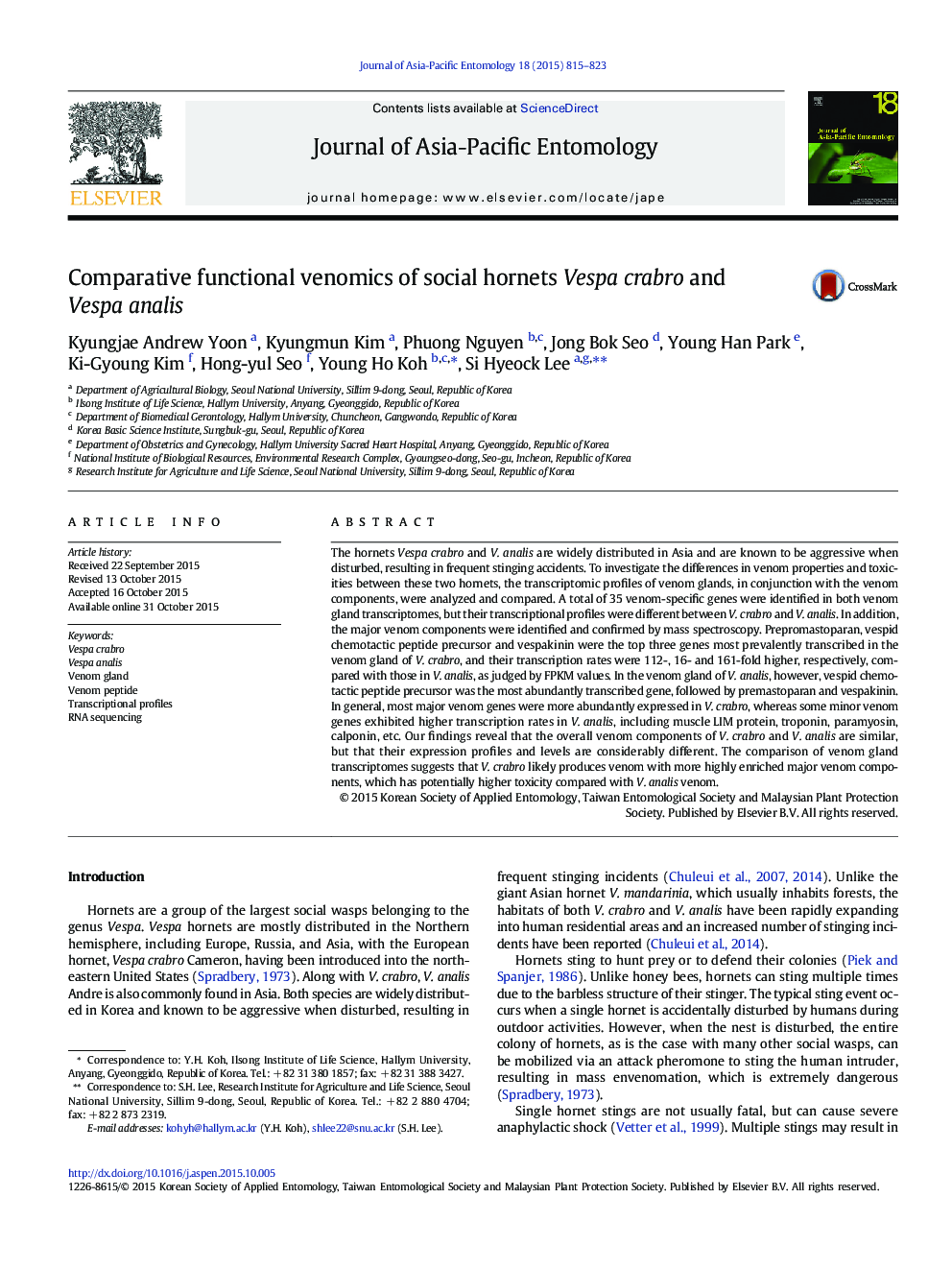| کد مقاله | کد نشریه | سال انتشار | مقاله انگلیسی | نسخه تمام متن |
|---|---|---|---|---|
| 4524403 | 1323576 | 2015 | 9 صفحه PDF | دانلود رایگان |

• Venom gland transcriptomes of Vespa crabro and V. analis were analyzed.
• The overall venom components of V. crabro and V. analis were similar.
• Most major venom genes were more abundantly expressed in V. crabro.
• Some minor venom genes exhibited higher transcription rates in V. analis.
• V. crabro likely produces venom with higher toxicity compared with V. analis.
The hornets Vespa crabro and V. analis are widely distributed in Asia and are known to be aggressive when disturbed, resulting in frequent stinging accidents. To investigate the differences in venom properties and toxicities between these two hornets, the transcriptomic profiles of venom glands, in conjunction with the venom components, were analyzed and compared. A total of 35 venom-specific genes were identified in both venom gland transcriptomes, but their transcriptional profiles were different between V. crabro and V. analis. In addition, the major venom components were identified and confirmed by mass spectroscopy. Prepromastoparan, vespid chemotactic peptide precursor and vespakinin were the top three genes most prevalently transcribed in the venom gland of V. crabro, and their transcription rates were 112-, 16- and 161-fold higher, respectively, compared with those in V. analis, as judged by FPKM values. In the venom gland of V. analis, however, vespid chemotactic peptide precursor was the most abundantly transcribed gene, followed by premastoparan and vespakinin. In general, most major venom genes were more abundantly expressed in V. crabro, whereas some minor venom genes exhibited higher transcription rates in V. analis, including muscle LIM protein, troponin, paramyosin, calponin, etc. Our findings reveal that the overall venom components of V. crabro and V. analis are similar, but that their expression profiles and levels are considerably different. The comparison of venom gland transcriptomes suggests that V. crabro likely produces venom with more highly enriched major venom components, which has potentially higher toxicity compared with V. analis venom.
Figure optionsDownload as PowerPoint slide
Journal: Journal of Asia-Pacific Entomology - Volume 18, Issue 4, December 2015, Pages 815–823